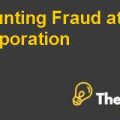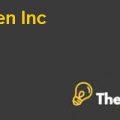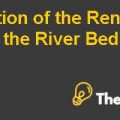
Off-Balance Sheet Leases in the Restaurant Industry
Introduction:
The report presents a case about the importance of off-balance sheet leases and in order to facilitate better results, the reports focuses on two companies that are running a chain of restaurants. Further, the report also focuses on leasing versus buying decision and about the accounting implications of leasing.
Additionally, the report also contains a part about the latest emerging issue of capitalizing all the lease obligations and determines how this change will have a substantial impact on the leverage and total debt capacity of the organization. Moreover, the report also distinguishes between off-balance sheet leases and liabilities reported on balance sheet.
Case analysis
- 1. What are the advantages and disadvantages of leasing over owing a restaurant property? Why does O’Charley’s prefer to own its properties and Morton’s to use operating leases?
There are different options available to organizations to either lease or buy the restaurant properties and the decision is based on potential benefits, which can be achieved from either of the financing facilities. The major advantages and disadvantages of leasing over owning a restaurant property includes the following,
Advantages:
a) No or little initial outflow
Purchasing a property would require a huge outflow of resources initially, whereas this is not the case for organizations that finance its properties through leasing. Under a lease agreement, an organization would require a little or no initial outflow to finance the strategy, which would improve the working capital of the restaurant and more cash would be available to the organization to grasp the future possible opportunity (Pollert, 2002).
b) Tax advantage
Lease rental payments are an allowable tax expense in calculating taxable profits, which will reduce taxable profits for restaurants, hence, reporting a low tax expense and more profits will be available for shareholders for distribution.
c) Transaction cost may be lower
The transaction cost on lease agreement is lower as compared to the transaction cost associated with purchasing the property. Leasing enables an organization to save heavy admin cost, which could be used by the organization to make the initial down payment (Pollert, 2002).
d) Improves working capital
The lease agreement requires a nil or low initial outflow of resources, so the organization will have heavy cash available to finance the working capital. Further, it will also lead the company to suffer low interest cost on its overdraft facility.
Disadvantages
a) No ownership
In a leasing agreement, the lessee possesses the rights to use the property but does not own the property. This may be a critical situation epically for the well settled restaurants where the lessor may demand heavy lease payments for the properties.
b) High interest cost
As the lease payments are deferred over the period of the lease term, so the restaurants suffer heavy interest cost. Further, increased interest cost will reduce the interest cover of the organization and will also threaten the credit rating, which will increase difficulty for the organization in raising additional finance or there can also be a possibility that the finance may be raised at comparatively higher interest rate.
c) Early redemption may require heavy outflow of resources
A lease agreement is a formal agreement between the lessee and lessor and any violation in the terms of agreement may require heavy outflow of resources. If the restaurants failed to continue with the leased property then the organizations will have to suffer a heavy penalty.
d) Long term expense than buying on credit
If the property is purchased then the organization will be required to make a one off payment at the designated time period whereas this is not the case in leasing where the organization is required to make regular payments, which will increase the long term expense of the organization (Pollert, 2002).
Morton restaurant group prefers operating lease because the potential sites generally seek major metropolitan areas and the restaurants primarily focus on high end, business oriented clientele where the property purchasing cost is relatively high, so the organization prefers to expand its operations through operating lease whereas, O’Charley’s Inc. prefers to expand its operations through owing the properties because they primarily focus on smaller markets where the purchasing price is comparatively low.
2. What were the implied interest rates the two companies used when calculating their capital leases? Using the same respective interest rates, what is the magnitude of the off-balance sheet lease obligations for the two companies at the end of 1999? (Assume that in the lease footnotes “Thereafter” is equal to 10 years for both companies”
Implicit rate is the nominal interest rate implied by borrowing a fixed amount of money in capital lease and returning a different sum of money in future.
By using the same interest rates, the magnitude of the off-balance sheet lease obligations for the two companies at the end of 1999 are different .....................
This is just a sample partial case solution. Please place the order on the website to order your own originally done case solution.
Amid growing concerns about the credit institutions balance liabilities, an analyst of one of the leading credit rating agencies were asked to report on off-balance sheet commitments, strategic analysis of leasing versus buying property and lease accounting. "Hide
by Amy P. Hutton, Paul M. Healy, Jacob Cohen Source: Harvard Business School 15 pages. Publication Date: 02 Oct 2000. Prod. # 101 033-PDF-ENG













